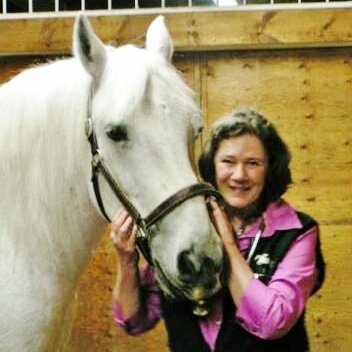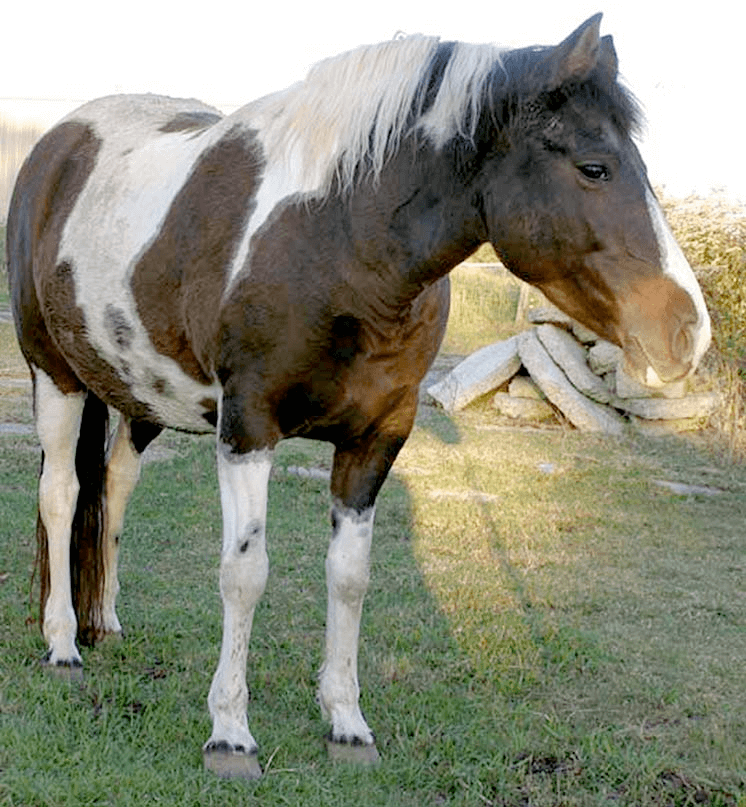Laminitis caused by high insulin is different from other types
Laminitis caused by high insulin is different from other types of laminitis. Both you and your veterinarian are anxious to relieve your horse’s pain when there is laminitis. The first thing reached for is usually phenylbutazone or another NSAID drug like Banamine or Equioxx. Unfortunately, they often have little effect.
Types of Laminitis
There are many different types of lamintis, including:
- Mechanical: A horse is overloading one leg because another is injured, stretched laminae and dropped coffin bone from a long toe and/or shoes.
- Inflammatory: Grain overload, experimental fructan overload, retained placenta, Strangles, colic, Salmonella, Lyme, Potomac Horse Fever.
- Endocrinopathic – EMS or PPID.
Medications
Anti-inflammatory drugs like the NSAIDs (nonsteroidal anti-inflammatory drugs) are most effective with the inflammatory types of laminitis which involve destruction of the basement membrane of the laminae, which does not occur in endocrinopathic laminitis.
The FDA-approved instructions on the product inserts for these drugs clearly limits their use to 5 to 14 days only (depending on the drug). This is because of the significant risk of damage to the stomach, colon, or kidneys with long-term use. Despite these mandated precautions, many horses end up in a cycle of long-term pain and NSAID use because the real cause of their pain is not being addressed.
Efficacy
Research has clearly shown that approximately 90% of laminitis cases are endocrinopathic.
Endocrinopathic refers to a problem with the endocrine system, the hormones. In this case it is insulin in horses with Equine Metabolic Syndrome – EMS or PPID – Pituitary Pars Intermedia Dysfunction. High insulin levels cause the laminitis.
NSAIDs do nothing to lower insulin. The white blood cell invasion and basement membrane destruction does not happen with this type of laminitis. The NSAIDs are reasonable for a few days because any damaged or destroyed tissue will trigger an inflammatory reaction, but the real focus needs to be on insulin and the effects of insulin.
What Works
Insulin is lowered by a low-sugar and -starch diet. Feed only grass hay soaked for 30 minutes until a hay analysis can be done. No grain, including those called “safe”, and soaked beet pulp only as a carrier for supplements. For more details see the files at https://ecir.groups.io/g/main. Those that fail to respond can be started on metformin. It’s also important to do a physiologically correct realigning trim as soon as possible.
Finally, the only clearly documented effect of high insulin is to increase levels of endothelin-1, which causes blood vessels to spasm. The Chinese herb Jiaogulan can counteract this by increasing activity of the eNOS, endothelial nitric oxide synthase, an enzyme which produces nitric oxide inside blood vessels to dilate them. Arginine supports this production.
Endocrinopathic laminitis is different but if you approach it with the goal of controlling the cause – insulin – results are good. For more information see www.ecirhorse.org
RELATED: Fat Horses – A talk about Equine Metabolic Syndrome and Laminitis

Dr. Eleanor Kellon is an established authority in the field of equine nutrition for over 30 years, and a founding member and leader of the Equine Cushings and Insulin Resistance (ECIR) group, whose mission is to improve the welfare of horses with metabolic disorders via integration of research and real-life
Started in 1999, the ECIR Group is the largest field-trial database for PPID and EMS in the world and provides the latest research, diagnosis, and treatment information, in addition to dietary recommendations, for horses with these conditions. Even universities do not and cannot compile and follow long term as many in-depth case histories of PPID/EMS horses as the ECIR Group.


